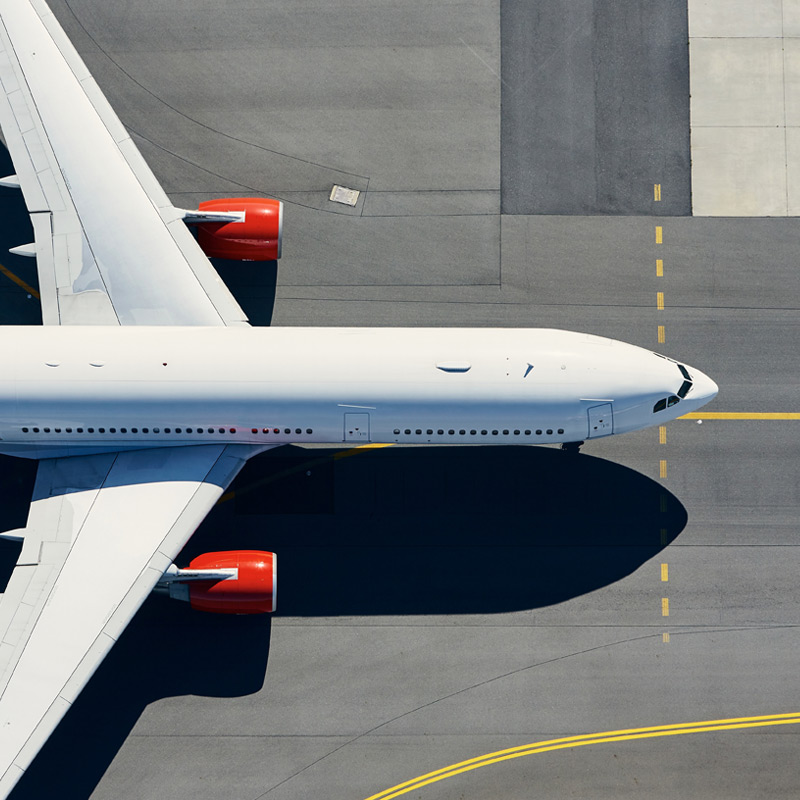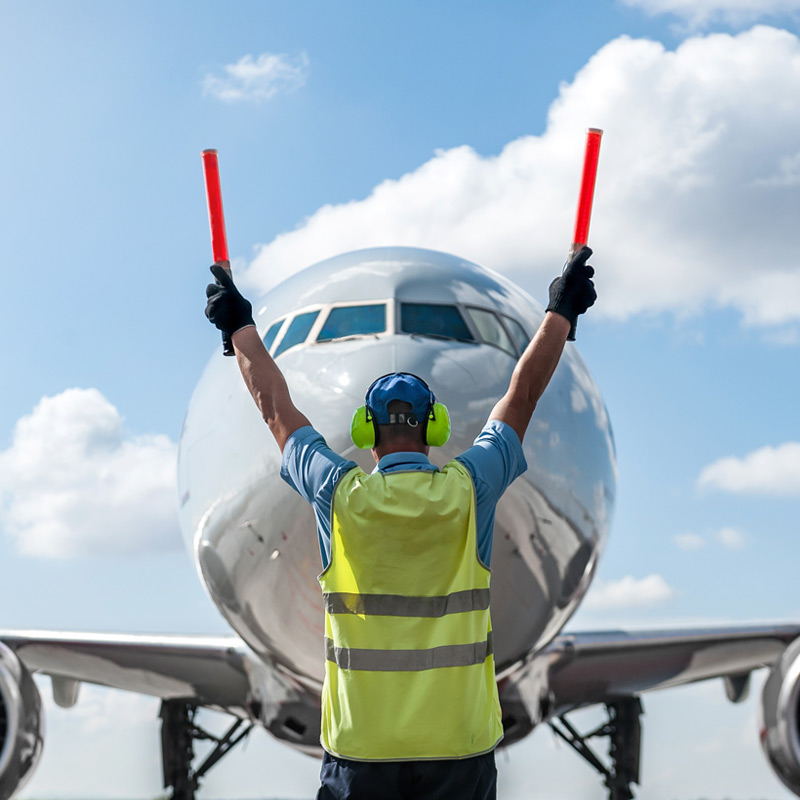Concept of Operations
Usher AI’s system allows for future-proof, plannable and predictable ground operations. Interfacing both to Air Traffic Control (ATC) and gate planning systems, Usher AI can receive or set routes for planes. The routes planned are dead-lock free and time-coordinated to ensure the fluency of all movements. This minimizes the time on the ground and thus fuel burn and the associated emissions.
By automating the routing, the burden on air traffic controllers is reduced, addressing the staffing shortage and decreasing the resulting delays. The system is operated and supervised by air traffic control, providing authorization for runway crossings and other defined maneuvers.
Taxibot
Usher AI’s approach supports single engine and sustainable taxiing operations as well as engine off taxiing with the semi-robotic Taxibot. The system’s automated follow-me vehicles, Usherbots, pick up aircraft after leaving the runway when arriving and after push-back when departing. Holding locations near runways and gates require a small footprint only, with locations distributed over the airport to avoid job less movements.
For the ultimate ground operations, the system also guides other vehicles operational in the airport maneuvering area. Guiding buses and service vehicles as well ensures operations are optimized from a holistic standpoint. The exceptions are routes that are not plannable, such as emergency vehicles. For their movements Usher’s routes and guidance of airplanes is adjusted (or stopped).
Usher impacts the work of the various stakeholders positively:
Air traffic controller/ANSP
Planning, routing and guidance of traffic on the airport’s surface becomes easier, thus consuming less time and reducing risk. With only limited communication required and procedures fully digital, working seamlessly with other stakeholders in the airport’s APOC is facilitated.

Airport operator
The efficient routing ensures Co2 and (ultra)fine particle emissions are reduced. It also allows for new operational concepts such as sustainable taxiing and starting engines away from the gates. The pressure on gates and runways is relieved while overall safety and efficiency are improved.

Airlines
The centralized routing ensures fuel burn during taxiing and time on the ground is minimized. The workload for pilots is eased, especially at unfamiliar airports, leading to higher predictability and lower damages. With the air traffic controller in the APOC, further optimization is possible.
